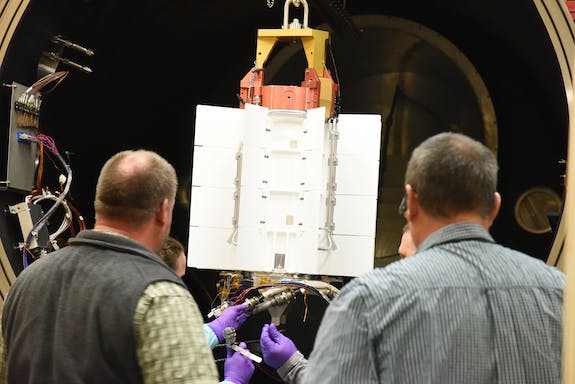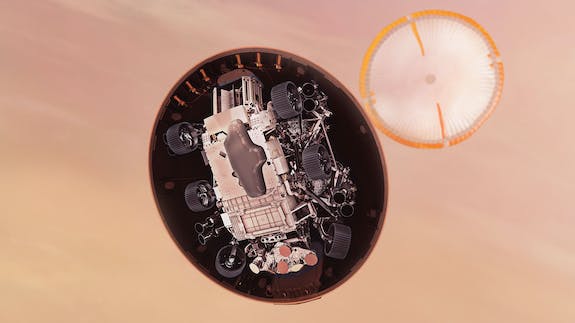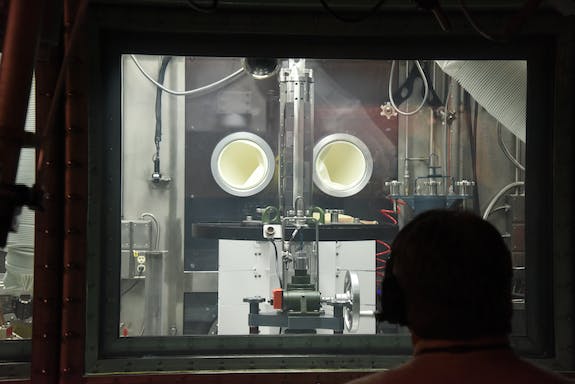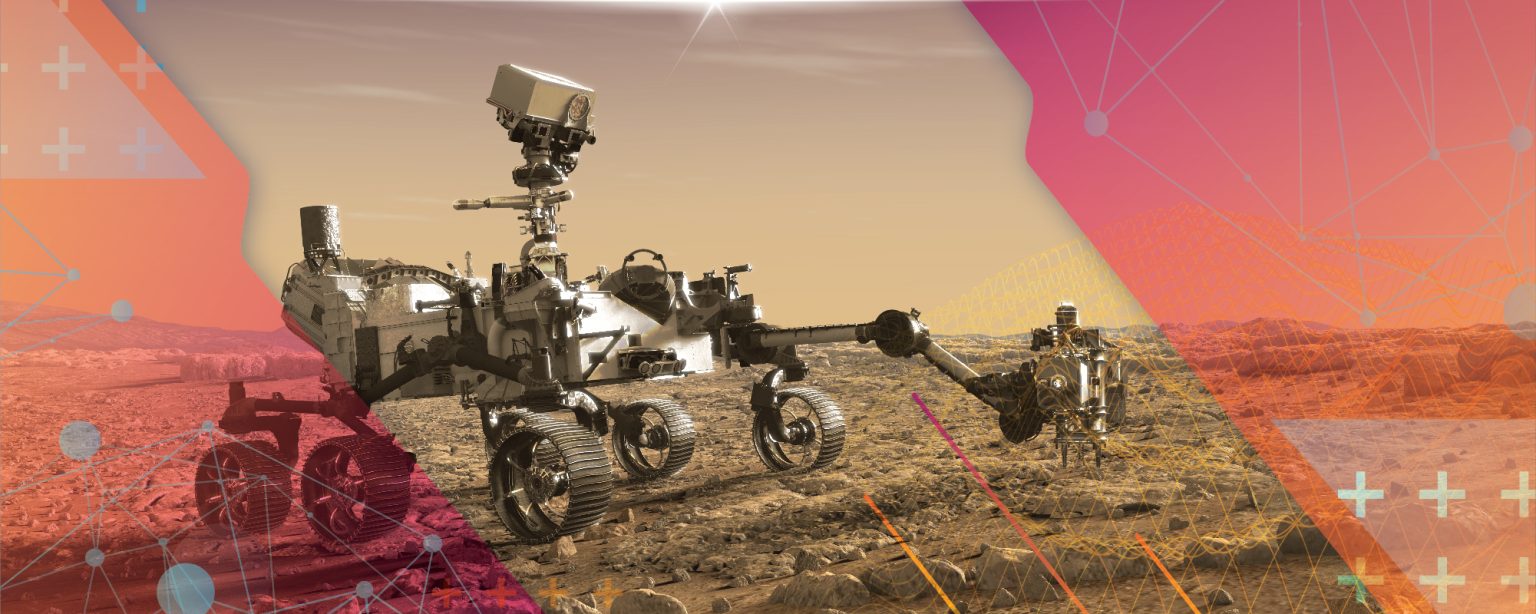Stephen Johnson expects to feel some nervousness and an immense sense of pride when the Mars 2020 Perseverance rover races through the thin atmosphere of the Red Planet and is slowly lowered to the surface by a rocket-powered sky crane.
Perseverance’s landing Feb. 18 will mark the end of a decade of planning, years of hands-on work and a nearly seven-month, 300-million-mile journey from Earth to Mars. It will also mark the beginning of what those involved hope is a successful scientific adventure.

Johnson and the more than 60 members of his space power systems team at Idaho National Laboratory spent five years training, conducting readiness reviews, fueling, testing and then delivering the power source that will provide electrical power and heat for the rover.
They overcame the everyday challenges and strict requirements that come with preparing equipment to meet the demands required to survive the harsh Martian environment.
Those challenges were expected; they’re part of the job.
The unique challenges presented by COVID-19 were a totally different story. There was nothing in any of their procedures or operations that explained how to deal with a pandemic.
“When we had it fueled and tested in October, we felt pretty good,” Johnson said of the power source, officially called a multi-mission radioisotope thermoelectric generator, or MMRTG. “In March, when we were doing the final logistics for the MMRTG to be picked up in the spring, the feeling changed.”

Even though his team had completed its fueling and testing work, they still had to deliver the power system to Kennedy Space Center in Florida, then help integrate the power system into the rover to get it ready for takeoff. Johnson would need a crew of 24 to finish the work. Unfortunately, COVID was quickly changing everyone’s travel plans.
“Every day, someone’s plane tickets were getting (canceled),” Johnson said. “Then you worry about how you’re going to get people down there.”
Johnson said some members of his team were eventually able to take commercial flights to Florida while others drove the 2,436 miles to the Sunshine State. The remaining members of the team made the trip on a corporate jet offered by the parent company that manages INL and seven other national labs.
The challenge continued once in Florida as team members completed their work while following strict COVID guidelines and spending most of their time away from work in their hotel rooms.
“I’m just glad everyone was able to get down there safely and no one got sick,” Johnson said. “We were fortunate.”
THE MISSION
The Perseverance rover is a key part of NASA’s Mars Exploration Program, a decadeslong plan for robotic exploration of the Red Planet.

Perseverance’s power system weighs about 100 pounds and is located on the aft end of the rover. It delivers a constant source of electricity, charges the rover’s two primary batteries and keeps key instruments and onboard systems warm in the chilly Mars environment.
It will allow the rover to collect rock and soil samples and store those samples in containers on the surface for a possible return to Earth in a future mission. It will provide the power for scientists to demonstrate technologies that could enable future human missions to Mars, including a method to produce oxygen from the Martian atmosphere, and identify other resources (such as water under the surface).
The power system is ideal for the challenges Perseverance will face because it is durable and reliable (14-year operational life), allows scientists to maximize the rover’s capabilities, and offers flexibility to operate day and night through all seasons.
A new technology demonstration is hitching a ride to Mars on the rover’s belly, one that will test the first powered flight on another planet. The Mars Helicopter, named Ingenuity, will take a series of flight tests over a 30-Martian-day period sometime this spring to explore powered flights in the thin air of Mars.
WHAT IS INL’S ROLE?
For 40 years, NASA has used radioisotope thermoelectric generators to generate power and heat for 27 space missions. These systems, which have no moving parts, consist of two major elements: a heat source that contains plutonium-238 and thermocouples that make electricity by exploiting the temperature difference between plutonium’s decay heat and the cold of space.
INL partners with Oak Ridge, Los Alamos and Sandia national laboratories, and private industry, to provide radioisotope power systems for DOE’s Office of Nuclear Energy, enabling deep-space scientific exploration.

Generators fueled, tested and delivered by INL are currently powering the Mars Science Laboratory Curiosity rover (launched in 2011 and still going strong) and Pluto New Horizons (launched in 2006 and now more than 4.1 billion miles from Earth, traveling at more than 30,000 mph). The power system on New Horizons was the first assembled and tested at INL.
Johnson helped bring the space power systems program to INL in the early 2000s and his teams have powered three NASA missions during that time. It never gets old.
“I’m just really happy for everyone associated with this,” Johnson said. “We’re in a fortunate position because we get to see the fruits of our labor, and there are a lot of people (at INL) who don’t get to do that. We get to see it built, see it take off and see it land in a relatively short period of time. This is relatively instant gratification. What a neat sense of accomplishment.
“I hope everybody at the lab feels a sense of pride,” he said. “I hope everyone is watching.”





